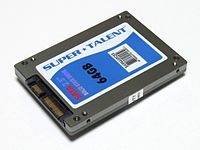
Photo from wikipedia
Abstract To conduct accurate lightning prediction and nowcasting, it is important to clarify the relationship between electrification and microphysical properties in clouds. Using the dual-polarization Doppler radar with the hydrometeor… Click to show full abstract
Abstract To conduct accurate lightning prediction and nowcasting, it is important to clarify the relationship between electrification and microphysical properties in clouds. Using the dual-polarization Doppler radar with the hydrometeor classification algorithm and lightning observation, radar-derived microphysical properties related to lightning flash rate were investigated in terms of 10 isolated thunderstorm cases over the Kanto Plain, Japan, with 351 radar volume scans conducted every 5 min during the summer period. In this study, the ice-related particles within the 35 dBZ volume (V35IC) showed the highest correlation coefficient (r = 0.75) and the lowest normalized root mean square error (NRMSE = 8.3%) in relation to cloud-to-ground lightning (CG), and also best to intra-cloud lightning (IC, r = 0.69, NRMSE = 8.1%). The correlation between V35IC and CG flash rate was better than that of the mixed-phase (between 0 °C and − 40 °C) 35 dBZ volume (r = 0.64), without considering the microphysical particles. The second-best radar-derived microphysical property was the ice mass consisting of the radar grids of all the ice-related particles (r = 0.72). These results suggest that an effective lightning indicator in terms of a radar-derived property is the ice-related particle volume, in addition to the traditionally used graupel and hail. The ice-related particle volume in the colder region of the thunderstorm (air temperature lower than −10 °C) showed a higher correlation with CG and IC than that in the warmer region, especially in terms of IC. These results are consistent with the non-inductive charging theory that has been well accepted in previous studies. Following time-lag correlation analysis from 0 to −30 min every 5 min before thunderstorm initiation, it was found that the ice-related index of V35IC demonstrated the slowest decrease (r = 0.75–0.65 in 30 min) in the correlation coefficient with time lapse and may be suitable as a lightning nowcast indicator.
Journal Title: Atmospheric Research
Year Published: 2021
Link to full text (if available)
Share on Social Media: Sign Up to like & get
recommendations!